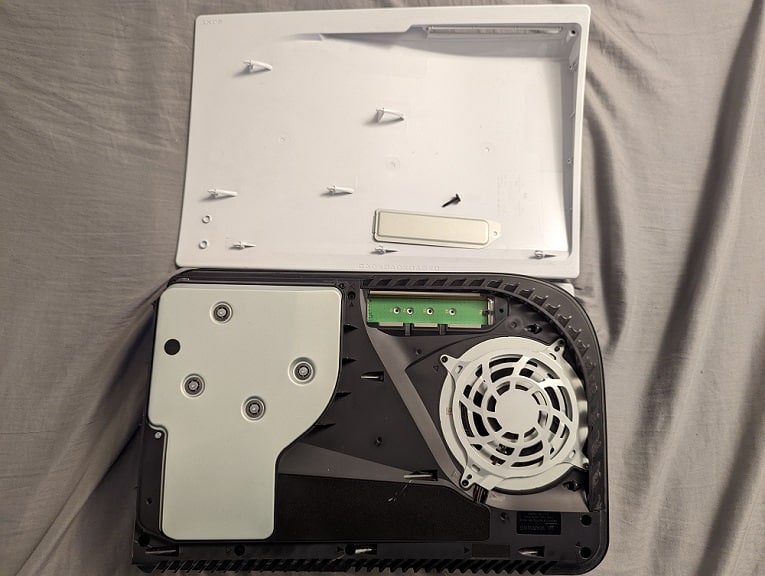The JBL PartyBox On-The-Go is capable of playing music and other audio files from a USB storage device. To see how you can use this feature, you can check out this guide at Seeking Tech.
JBL PartyBox On-The-Go USB Minimum Requirements
In order to use a USB storage device with the JBL PartyBox On-The-Go, you need to meet the following minimum requirements:
- USB Connector: USB Type-A
- USB Interface: USB 2.0 or later
- USB Format: FAT16 or FAT32
Supported Audio Formats for JBL PartyBox On-The-Go USB Audio Playback
The PartyBox On-The-Go speaker is compatible with the following audio formats for playback when using the USB connection:
- WAVE Extension, PCM Codec, 44.1 KHz to 192 KHz Sample Rate and less than 5 Mbps Bitrate
- WAVE Extension, LPCM Codec, 44.1 KHz to 192 KHz Sample Rate and less than 5 Mbps Bitrate
- WAVE Extension, IMA_ADPCM Codec, 44.1 KHz to 192 KHz Sample Rate and less than 5 Mbps Bitrate
- WAVE Extension, MPEG Codec, 44.1 KHz to 192 KHz Sample Rate and less than 5 Mbps Bitrate
- WAVE Extension, MULAW Codec, 44.1 KHz to 192 KHz Sample Rate and less than 5 Mbps Bitrate
- MP3 Extension, MPGE1 layer1/2/3 Codec, 32 KHz to 48 KHz Sample Rate and 32 Kbps to 320 Kbps Bitrate
- MP3 Extension, MPGE2 layer1/2/3 Codec, 16 KHz to 24 KHz Sample Rate and 8 Kbps to 160 Kbps Bitrate
- MP3 Extension, MPGE2.5 layer3 Codec, 8 KHz to 12 KHz Sample Rate and 8 Kbps to 160 Kbps Bitrate
- WMA Extension, up to 320 Kbps Sample Rate and 8 Kbps to 48 Kbps Bitrate
How to connect USB storage device to JBL PartyBox On-The-Go
In order to connect a USB storage drive to the JBL PartyBox On-The-Go, open the cover located on the back of the speaker.
Here, you should find the USB Type-A port that you need to use in order to plug in your USB storage device.
How the JBL PartyBox On-The-Go will play USB audio files
After plugging in your USB storage device, the JBL PartyBox On-The-Go will scan for audio files.
The speaker will start to play compatible audio files, in alphabetical order, from the root folder first and then up to 8 levels of subfolders.
So, if the PartyBox On-The-Go can’t find your audio file, first make sure that the file is in a compatible format. You can then try moving the audio file to the root folder to see if the speaker is able to detect it.
How to control the JBL PartyBox On-The-Go will play USB audio files
To control the JBL PartyBox On-The-Go when it is playing an audio file thorough a USB storage device, you have the following options:
- Press the Play button once to play an audio file from the USB connection.
- When an audio file is playing, press the Play button once to pause the to pause the audio.
- When an audio file is playing, press the Play button twice in quick succession to skip to the next audio file.
- When an audio file is playing, press the Play button three times in quick succession to skip to the previous audio file.
- When an audio file is playing, use the + button to increase the volume as well as the – button to decrease the volume.
- When an audio file is playing, press and hold the + and – buttons at the same time to mute. You can also press these buttons at the same time to unmute the speaker.
Can you play audio from USB, Bluetooth and AUX connections at the same time with PartyBox On-The-Go?
The JBL PartyBox On-The-Go can only playback audio from one source at a time.
The USB storage device is top priority. This means that the speaker will switch to playing audio files from the USB connection every time you plug a compatible device into its USB port.
The second top priority is Bluetooth. So, if you plug a USB storage device into the PartyBox On-The-Go while it is playing audio from a Bluetooth connection, then the speaker will automatically switch to the audio from the USB device.
Audio coming from AUX input is the lowest priority. This means that the JBL PartyBox On-The-Go will only play audio files over the AUX connection if the speaker isn’t connected to a Bluetooth or USB connection.

